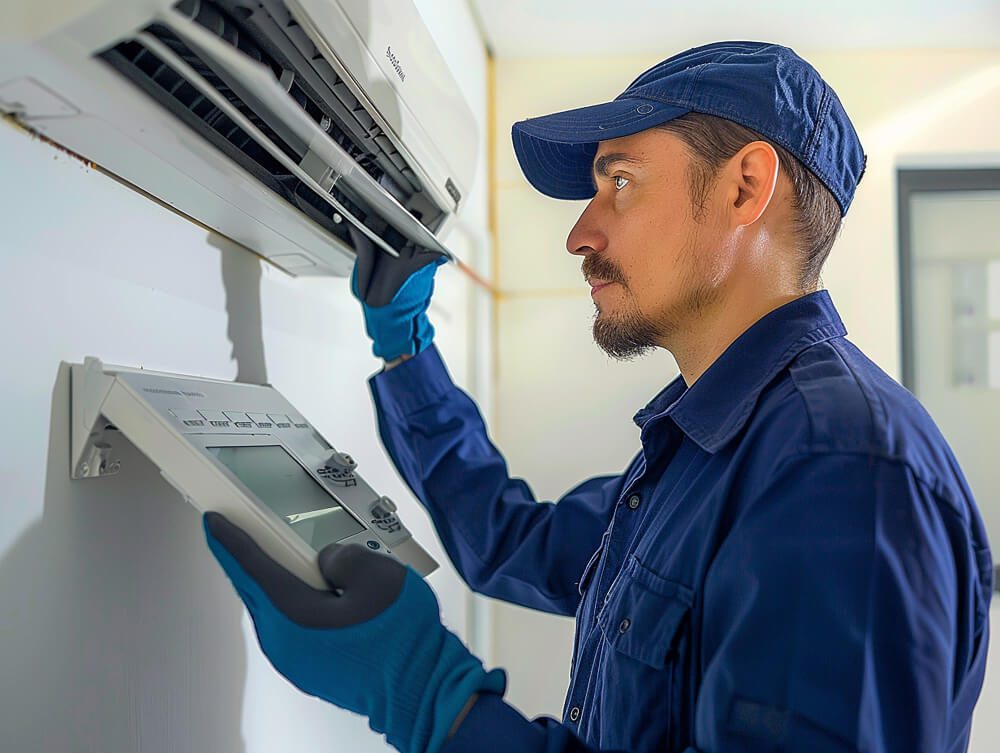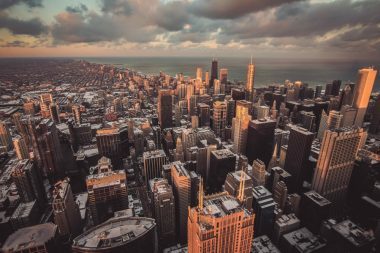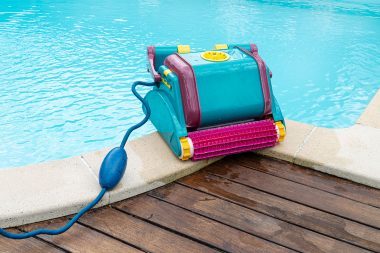Why Is My AC Running But Not Cooling the House?
Updated Tue, Nov 4, 2025 - 16 min read
Top blog articles
If your air conditioner is running but not cooling your house, you’re not alone. This frustrating problem affects thousands of homeowners, especially during the hottest months of summer when you need your AC system the most. The good news? Many cooling issues have simple fixes you can try yourself before calling an HVAC professional.
When your AC runs continuously without lowering the temperature, it’s trying to tell you something is wrong. From dirty air filters restricting airflow to refrigerant leaks affecting cooling capacity, several culprits could be behind your comfort crisis. Understanding these issues helps you troubleshoot effectively and decide whether it’s a DIY fix or time to call in the experts.
Should I Turn Off My AC If It’s Not Cooling?
Yes, you should turn off your air conditioner temporarily if it’s running but not cooling effectively. Here’s why this matters for your system’s health and your wallet:
Prevent Further Damage
Continuing to run a malfunctioning AC can make minor problems worse. If there’s a refrigerant leak or a failing compressor, running the system can cause additional damage to components, potentially turning a $300 repair into a $2,000 replacement.
Avoid Wasting Energy
An inefficient air conditioner that’s struggling to cool your home is consuming electricity without delivering results. This increases your utility bills significantly. According to the Department of Energy, air conditioning accounts for about 12% of home energy costs (nearly $29 billion annually for U.S. homeowners) and a poorly functioning AC can waste 20-40% more energy than a properly maintained system.
Prevent Overworking the System
When your AC can’t reach the set temperature, it runs continuously trying to catch up. This constant operation puts excessive wear and tear on system components, reducing their lifespan and potentially leading to more expensive repairs down the line.
Maintain Indoor Comfort
While turning off your AC temporarily may seem counterintuitive, it’s better to address the problem quickly than to keep running a system that’s not working properly. Once you’ve identified and fixed the issue, you can safely turn it back on to resume effective cooling.
Common Reasons Your AC Is Running But Not Cooling
1. Incorrect Thermostat Settings
One of the simplest explanations for an AC not cooling is improper thermostat settings. Your thermostat acts as the brain of your cooling system, and if it’s set incorrectly, everything else fails to work properly.
Check These Settings:
- Make sure your thermostat is set to “cool” mode, not “heat” or “off”
- Verify the temperature is set lower than the current room temperature
- Ensure the fan setting is on “auto” instead of “on” (when set to “on,” the fan runs constantly, even when the AC isn’t in a cooling cycle, blowing warm air)
- Replace dead or weak batteries in your thermostat
If your thermostat is located near heat sources like windows, lamps, or appliances, it might think your home is warmer than it actually is, causing improper cooling cycles.
2. Dirty or Clogged Air Filters
Dirty air filters are the most common cause of AC cooling problems. Over time, dust, pollen, pet dander, and other particles accumulate on your filter, restricting airflow through your system.
When airflow is restricted, your AC has to work much harder to circulate cool air throughout your home. This reduced efficiency means less cooling power and higher energy bills. In severe cases, a clogged filter can cause your system to freeze up completely. According to the Department of Energy’s AC maintenance guidelines, dirty filters are the leading cause of preventable AC problems.
Solution: Check your air filter monthly and replace it at least every three months. If you have pets, allergies, or live in a dusty area, change filters more frequently, monthly during peak cooling season. This simple maintenance task costs just $10-30 and can prevent thousands in repair bills.
3. Refrigerant Leaks
Refrigerant is the substance that actually cools the air in your home. If your AC is low on refrigerant due to a leak, it simply cannot cool your house effectively, no matter how long it runs.
Signs of a Refrigerant Leak:
- AC blowing warm or room-temperature air
- Ice buildup on the evaporator coils or refrigerant lines
- Hissing or bubbling sounds near the outdoor unit
- Significantly reduced cooling capacity
- Higher than normal electricity bills
Refrigerant leaks are not a DIY fix. According to EPA Section 608 regulations, only licensed HVAC technicians can handle refrigerant, and it’s illegal to knowingly vent refrigerants into the atmosphere. Attempting to recharge refrigerant without fixing the leak is a temporary solution that will fail again. Professional repair costs typically range from $200 to $1,500, depending on the severity of the leak and the type of refrigerant your system uses.
4. Dirty Condenser Coils
The condenser coils in your outdoor unit are responsible for releasing the heat absorbed from inside your home. When these coils become covered with dirt, leaves, grass clippings, or other debris, they can’t efficiently release heat, severely impacting your AC’s cooling performance.
How to Clean Your Condenser Coils:
- Turn off the power to your outdoor unit at the breaker
- Clear away debris, leaves, and vegetation from around the unit (maintain at least 2 feet of clearance)
- Gently spray the coils with a garden hose from the inside out
- Use a soft brush to remove stubborn dirt from the fins
- Be careful not to bend the delicate metal fins
If you’re uncomfortable cleaning the coils yourself, professional cleaning typically costs $100-250 and is often included in annual HVAC maintenance visits.
5. Frozen Evaporator Coils
If you notice ice buildup on your indoor unit or refrigerant lines, your evaporator coils are frozen. Frozen coils can’t absorb heat from your indoor air, which means no cooling despite the system running.
Common Causes of Frozen Coils:
- Restricted airflow from dirty filters
- Low refrigerant levels
- Blocked or closed vents in your home
- Dirty evaporator coils
- Malfunctioning blower fan
Solution: Turn off your AC and let the coils thaw completely (this can take several hours). Once thawed, check your air filter and make sure all vents are open. If the problem persists, call an HVAC technician to diagnose the underlying cause.
6. Faulty Compressor
The compressor is the heart of your AC system. It pressurizes the refrigerant and pumps it through the system, making the entire cooling process possible. When the compressor begins to fail, your air conditioner might still run, but it won’t keep your home cool.
Signs of Compressor Problems:
- Warm air blowing from vents
- Strange grinding, clicking, or rattling noises from the outdoor unit
- Circuit breakers tripping frequently
- Hard starting (the unit struggles to turn on)
- The outdoor unit vibrates excessively when running
Compressor replacement is one of the most expensive AC repairs, typically costing $1,800 to $2,800 if your unit is out of warranty. If your AC is older than 10 years and needs a compressor replacement, it often makes more financial sense to replace the entire system.
7. Blocked or Leaking Air Ducts
Even if your AC is producing cold air, blocked or leaking ductwork can prevent that cool air from reaching the rooms in your home. According to Energy Star, homes can lose 20-30% of cooling capacity due to leaky or poorly insulated ducts, significantly impacting your comfort and energy bills.
Check for Duct Issues:
- Inspect visible ductwork for disconnected sections, holes, or gaps
- Look for excessive dust around vents (indicates leaks)
- Notice if some rooms cool while others don’t
- Check that all vents and registers are open and unobstructed
Sealing duct leaks typically costs $300-1,000 and can significantly improve your AC’s performance and energy efficiency.
8. Undersized or Oversized AC Unit
If your AC has always struggled to keep your home cool, the unit might be improperly sized for your space. An undersized unit runs constantly, trying to meet cooling demands but never quite achieves the set temperature. Conversely, an oversized unit short-cycles (turns on and off frequently), failing to properly dehumidify your home, and leading to premature wear.
Proper AC sizing requires a professional load calculation that considers your home’s square footage, insulation levels, window placement, ceiling height, and climate. If your unit is incorrectly sized, replacement may be your only option for reliable, efficient cooling.
9. Clogged Condensate Drain Line
Your AC removes moisture from the air as it cools, and that water needs somewhere to go. A clogged condensate drain line can cause water to back up into your system, triggering an automatic shutdown to protect against water damage.
Signs of a Clogged Drain Line:
- Water pooling around your indoor unit
- Musty odors near the AC
- System shuts off unexpectedly
- Reduced cooling performance
DIY Solution: Locate the drain line (usually a PVC pipe near your indoor unit) and pour a cup of white vinegar or bleach into the line to clear minor clogs. For stubborn blockages, use a wet/dry vacuum to suction out the debris. Professional drain line cleaning typically costs $100-250.
Step-by-Step Troubleshooting Guide

Before calling an HVAC professional, try these troubleshooting steps to potentially save yourself a service call fee:
Step 1: Check Your Thermostat
- Verify it’s set to “cool” with a temperature below room temperature
- Replace batteries if needed
- Ensure the fan setting is on “auto”
Step 2: Inspect and Replace the Air Filter
- Turn off your system
- Locate and remove the air filter
- Replace if dirty or clogged
- Wait 30 minutes and check if cooling improves
Step 3: Check All Vents and Registers
- Ensure all vents throughout your home are open
- Remove any furniture or objects blocking airflow
- Make sure curtains or blinds aren’t covering vents
Step 4: Examine the Outdoor Unit
- Clear debris from around the condenser
- Check that the unit is running when the AC is on
- Listen for unusual noises that might indicate mechanical problems
Step 5: Inspect for Ice Buildup
- Look at refrigerant lines for frost or ice
- Check the indoor unit for frozen coils
- If frozen, turn off the system and let it thaw completely
Step 6: Check the Circuit Breaker
- Verify the breaker for your AC hasn’t tripped
- Reset if necessary and monitor for repeated tripping
If you’ve tried all these steps and your AC still isn’t cooling properly, it’s time to call a professional HVAC technician.
How Much Does AC Repair Cost?
Understanding potential repair costs helps you make informed decisions about whether to repair or replace your system. Here’s what you can expect to pay for common AC repairs in 2025:
Minor Repairs:
- Thermostat replacement: $100-500
- Capacitor replacement: $150-400
- Air filter replacement: $10-50 (DIY)
- Condensate drain cleaning: $100-250
Moderate Repairs:
- Refrigerant leak repair and recharge: $200-1,500
- Evaporator coil cleaning: $100-400
- Condenser coil replacement: $900-2,200
- Blower motor replacement: $500-2,300
Major Repairs:
- Compressor replacement: $1,800-2,800
- Full duct sealing and repair: $300-1,000
- Air handler replacement: $1,500-3,400
Most HVAC companies charge a service call fee of $75-150 just to diagnose the problem. Labor rates typically run $100-250 per hour, depending on your location and the complexity of the repair.
The $5,000 Rule: Multiply your AC’s age by the cost of the repair. If that number exceeds $5,000, replacement is often the smarter financial decision. For example, if your 15-year-old AC needs a $500 repair (15 x $500 = $7,500), it’s probably time for a new system.
When to Call an HVAC Professional
While many AC issues can be diagnosed through basic troubleshooting, certain problems require professional expertise:
Call a professional immediately if you:
- Detect a refrigerant leak (never handle refrigerant yourself)
- Hear loud banging, grinding, or screeching noises
- Smell burning odors coming from your unit
- Notice water pooling around your indoor or outdoor unit
- Have tried basic troubleshooting without success
- See smoke or sparks from your AC unit
- Experience frequent circuit breaker trips
Professional HVAC technicians have specialized tools and training to safely diagnose and repair complex issues. They can also identify problems you might miss, preventing small issues from becoming expensive emergencies.
Preventive Maintenance Tips
The best way to avoid AC cooling problems is through regular preventive maintenance. These simple tasks can extend your system’s lifespan and keep it running efficiently:
Monthly Tasks:
- Check and replace air filters as needed
- Clear debris from around the outdoor unit
- Ensure all vents are open and unobstructed
Seasonal Tasks:
- Clean condenser coils before cooling season (learn proper techniques from the Department of Energy’s maintenance guide)
- Check refrigerant lines for damage or leaks
- Test thermostat accuracy
- Clean condensate drain line
- Inspect ductwork for visible damage
Annual Professional Maintenance: Schedule a professional tune-up before each cooling season. According to the Energy Star maintenance checklist, regular professional service can save 5-20% on energy bills. During this visit, a technician will:
- Inspect all electrical connections
- Measure refrigerant levels
- Test system controls
- Lubricate moving parts
- Check airflow and ductwork
- Clean coils and components
- Identify potential problems before they become emergencies
Annual maintenance typically costs $100-200 but can prevent costly repairs and extend your AC’s lifespan by several years. Many HVAC companies offer maintenance plans that include regular tune-ups plus discounts on repairs.
Energy-Saving Tips While Troubleshooting
While dealing with an AC that’s not cooling properly, here are ways to stay comfortable and save energy:
- Use ceiling fans to circulate air (they can make rooms feel 4 degrees cooler)
- Close blinds and curtains during the hottest part of the day
- Avoid using heat-generating appliances (ovens, dryers) during peak heat
- Set your thermostat a few degrees higher than usual (78°F is recommended)
- Ensure your home is properly insulated to reduce cooling load
- Consider a programmable thermostat to optimize cooling schedules
These strategies won’t fix your AC problem, but they can help you maintain some comfort while waiting for repairs or during troubleshooting.
Should You Repair or Replace Your AC?
Deciding between repair and replacement can be challenging. Consider these factors:
Repair If:
- Your AC is less than 10 years old
- Repair costs are under $1,000
- The system has been well-maintained
- You’re not planning to move soon
- Your current system is properly sized
Replace If:
- Your AC is over 15 years old
- Repairs exceed 50% of replacement cost
- You’ve had multiple repairs in recent years
- Your energy bills keep increasing
- Your system uses R-22 refrigerant (phased out in 2020)
- You’re experiencing frequent breakdowns
Modern AC systems are significantly more efficient than older models. According to Energy Star, replacing a system that’s more than 10 years old with a properly installed Energy Star-certified unit can save up to 20% on heating and cooling costs. Additionally, newer systems come with improved features like variable-speed compressors and smart thermostats that enhance both comfort and efficiency.
Bottom Line
When your AC is running but not cooling your house, it’s more than just an inconvenience; it’s a call to action. Start by checking the simple things: thermostat settings, air filters, and vents. Many cooling issues have straightforward solutions that homeowners can handle themselves.
However, don’t hesitate to call an HVAC professional when the problem goes beyond basic troubleshooting. Refrigerant leaks, compressor failures, and electrical issues require specialized knowledge and tools. Continuing to run a malfunctioning AC can cause further damage and higher repair costs.
Remember, regular preventive maintenance is your best defense against AC cooling problems. By investing in annual tune-ups and staying on top of simple tasks like filter changes, you’ll keep your system running efficiently for years to come, ensuring cool comfort when you need it most.
Planning to replace your air conditioning system? Use our free cost estimator tool to get an accurate estimate for AC installation in your area.
FAQs
Why is my AC blowing warm air?
Your AC blowing warm air typically indicates one of several issues: low refrigerant levels due to a leak, a malfunctioning compressor, frozen evaporator coils, or incorrect thermostat settings. Start by checking your thermostat is set to “cool” and the fan is on “auto.” If settings are correct, check for ice on your refrigerant lines. Low refrigerant is the most common cause and requires professional repair.
How long should I wait after my AC stops cooling before calling a technician?
If you’ve checked the thermostat, replaced the air filter, cleared debris from the outdoor unit, and ensured all vents are open, but the problem persists after 24 hours, it’s time to call an HVAC professional. However, if you notice refrigerant leaks, burning smells, unusual noises, or water leaks, call immediately; these issues can worsen quickly and cause additional damage.
Can a dirty filter really prevent my AC from cooling?
Absolutely. A dirty air filter is the most common cause of reduced cooling performance. When filters are clogged with dust, pet hair, and debris, airflow is severely restricted. This forces your AC to work harder while delivering less cooling power. In extreme cases, restricted airflow can cause evaporator coils to freeze, completely stopping the cooling process.
How often should AC refrigerant be refilled?
Under normal circumstances, your AC should never need refrigerant refilled. AC systems are sealed units, and refrigerant doesn’t “run out” like gasoline. If your system is low on refrigerant, you have a leak that must be repaired. The EPA’s guidance on refrigerant management emphasizes that simply refilling refrigerant without fixing the leak is a temporary band-aid that wastes money and fails to address the real problem. A properly functioning AC system will maintain its refrigerant charge for its entire lifespan.
Is it normal for my AC to run constantly during hot weather?
During extremely hot weather, it’s normal for your AC to run more frequently to maintain your set temperature. However, if it runs continuously without ever shutting off, or runs constantly but fails to cool your home to the desired temperature, there’s likely a problem. This could indicate an undersized unit, low refrigerant, dirty coils, or other efficiency issues requiring attention.
How much does it cost to fix an AC that’s not cooling?
AC repair costs vary widely based on the issue. Simple fixes like replacing a thermostat or cleaning a drain line cost $100-300. Mid-range repairs like fixing refrigerant leaks run $200-1,500. Major repairs like compressor replacement can cost $1,800-2,800. The average AC repair in 2025 costs around $375, though complex issues can exceed $3,000.
Can I clean my AC coils myself?
You can clean the outdoor condenser coils yourself with basic tools and care. Turn off power to the unit, remove debris, and gently spray the coils with a garden hose from the inside out. However, cleaning indoor evaporator coils is more complex and typically requires professional service, as it involves accessing parts inside your air handler and using specialized cleaning solutions.
Read more: DIY Air Conditioner Maintenance Checklist
Read more: How to Prepare Your HVAC for Home Renovation
Your opinion matters. Leave a comment









